Shooting on Kodak 35mm, DP Malik Hassan Sayeed's moody cinematography amplifies the tension in Luca Guadagnino's psychological thriller 'After the Hunt'

(L to R) Andrew Garfield as Hank and Julia Roberts as Alma in AFTER THE HUNT, from Amazon MGM Studios. Photo by Yannis Drakoulidis. © 2025 Amazon Content Services LLC. All Rights Reserved.
After the Hunt stars Julia Roberts as Alma, a respected professor of philosophy at Yale University, who suddenly finds herself at a personal and professional crossroads. When Hank, one of her professorial colleagues and best friend, is faced with a serious accusation from Maggie, a promising PhD student, Alma is forced to grapple with dark secrets from the past as mind games take hold.
The film premiered out-of-competition at the 2024 Venice Film Festival with Roberts' performance receiving high praise and DP Malik Hassan Sayeed's murky, off-kilter cinematography being noted for underscoring the moral ambiguities in the screenplay and the twists-and-turns in the unfolding story.
The movie represents a notable comeback to longform narrative by Sayeed after a 25-year hiatus. The DP made an instant name for himself on his debut feature, Spike Lee's Clockers (1995), considered a masterclass in utilizing light, color and composition to devastating emotional effect. This reputation was cemented by Lee's Girl 6 (1996) and He Got Game (1998), and the noir-like visuals he created for Hype Williams' crime movie Belly (1998). However, with his star ascending, the DP remarkably opted out of making features for a career shooting commercials, motivated largely by a desire to be present for his young children.
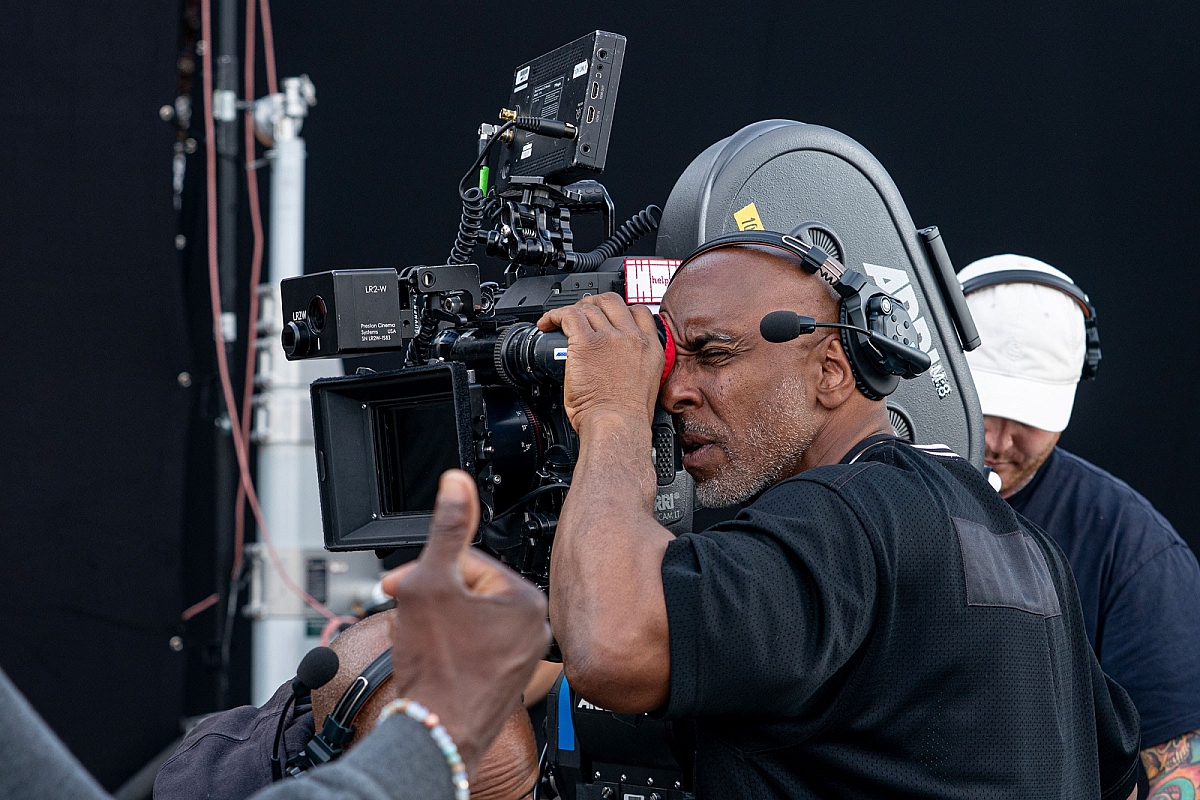
Director of photography Malik Hassan Sayeed on the set of AFTER THE HUNT, from Amazon MGM Studios. Photo y Yannis Drakoulidis. © 2025 Amazon Content Services LLC. All Rights Reserved.
"I felt that I needed to focus on my family, and although I didn't rule out working in movies entirely, it would have to be the right one to lure me back," says Sayeed. "So, I was both interested and flattered when Luca asked me to shoot After the Hunt."
Although After the Hunt marks Sayeed's first feature collaboration with Guadagnino, the pair were not entirely unknown to one another having previously worked together on a commercial for Chanel No.5 starring Margot Robbie.
"Luca actually got the script for the film while we were shooting that spot, and by the time we had finished he asked me would if I like to film it for him," Sayeed recalls. "That sounded amazing to me, as I had a calling to return to features and a desire to immerse myself in the world of academia, where the movie was set. I'm a person who gets excited by learning and shifting realities, and so it was enticing to me at this stage of my life."
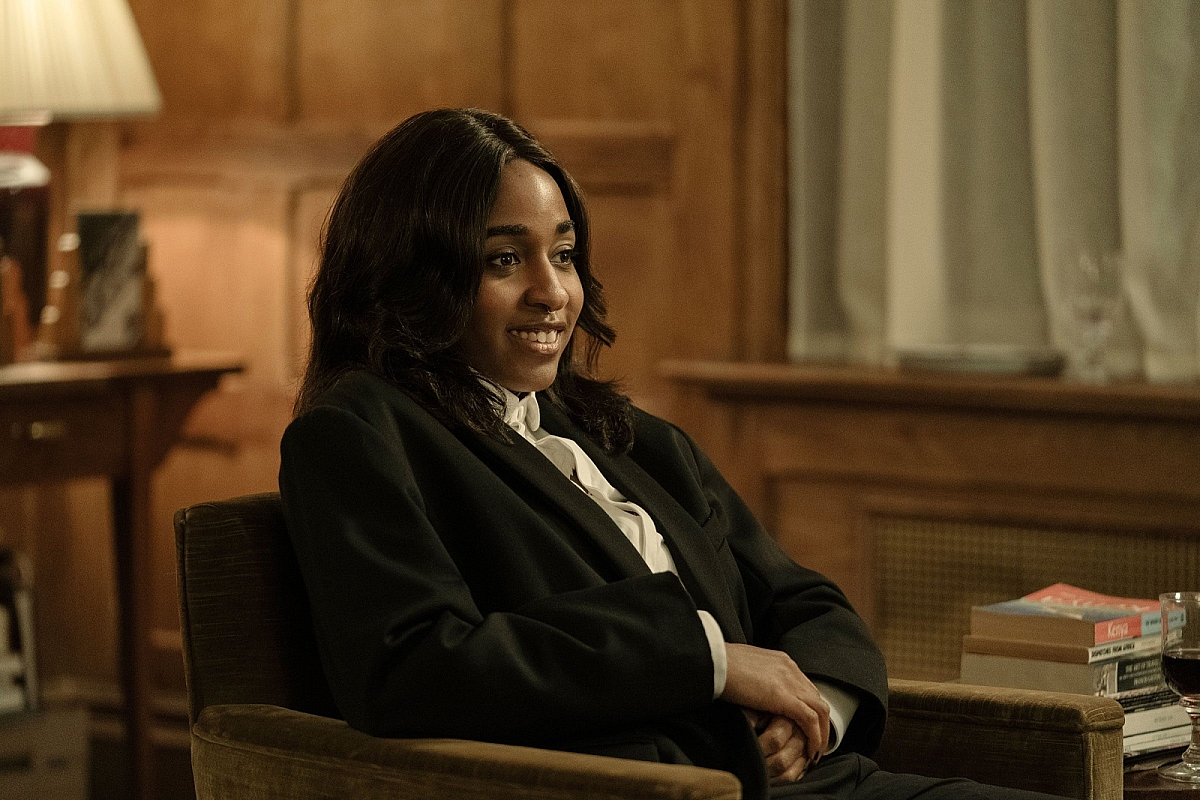
Ayo Edebiri stars as Maggie in AFTER THE HUNT, from Amazon MGM Studios. Photo by Yannis Drakoulidis. © 2025 Amazon Content Services LLC. All Rights Reserved.
Sayeed adds, "My cinematographic approach comes from the school of French filmmaker Robert Bresson. His book Notes on the Cinematographer (1975), where his thoughts about adopting a minimalist but controlled approach to get to the heart of how things should feel, were like an epiphany to me. So when Luca declared himself to be a Bresson-fan too, I was 100% signed up."
When it came to crafting the visual grammar for the film, Sayeed says he was struck by Guadagnino's references. "Luca gave me two precise and wonderful cinematographic inspirations, which I absolutely loved – the work of Sven Nykvisk FSF ASC with Ingmar Berman, and Gordon Willis ASC with Alan J Pakula, among others. He wanted After the Hunt to feel as if it were shot the 1980s, and those restraining parameters gave me a great idea about the nuances he had in mind.
"Luca liked the way Sven and Ingmar Bergman depicted relationships, the way that faces and people were photographed in films like Persona (1966) and The Silence (1963). We also dialed in to The Passion of Anna (1969) and the color scheme in Cries and Whispers (1972), which looked unbelievable when we screened a print of that film during prep at the BFI in London.

(L to R) Chloë Sevigny as Dr. Kim Sayers and Julia Roberts as Alma in AFTER THE HUNT, from Amazon MGM Studios. Photo by Yannis Drakoulidis. © 2025 Amazon Content Services LLC. All Rights Reserved.
"Gordon Willis has always been a North Star for me, lighting spaces and shadows, working in the toe of the curve with his dark and high contrast lighting with Pakula on movies like Klute (1971) and All the President's Men (1976). I also like the intentional, structural, world building he introduced to the more sophisticated, Manhattan-based narratives he shot."
Guadagnino had further specific requests. "He wanted to shoot the film in very few takes and with just one focal length lens – a 35mm – which he had done on Call Me by Your Name (2017, DP Sayombhu Mukdeeprom), which I consider to be a masterpiece. I love the work of the French photographer Henri Cartier-Bresson and his idea and knack of capturing 'the decisive moment,' how he almost exclusively worked with a 50mm lens. And I had always wanted to shoot a film along those lines.
"One of the other rules that Luca came up with was that we would only use equipment from the time he wanted to evoke, meaning if the technology didn't exist before 1988, we wouldn't use it."
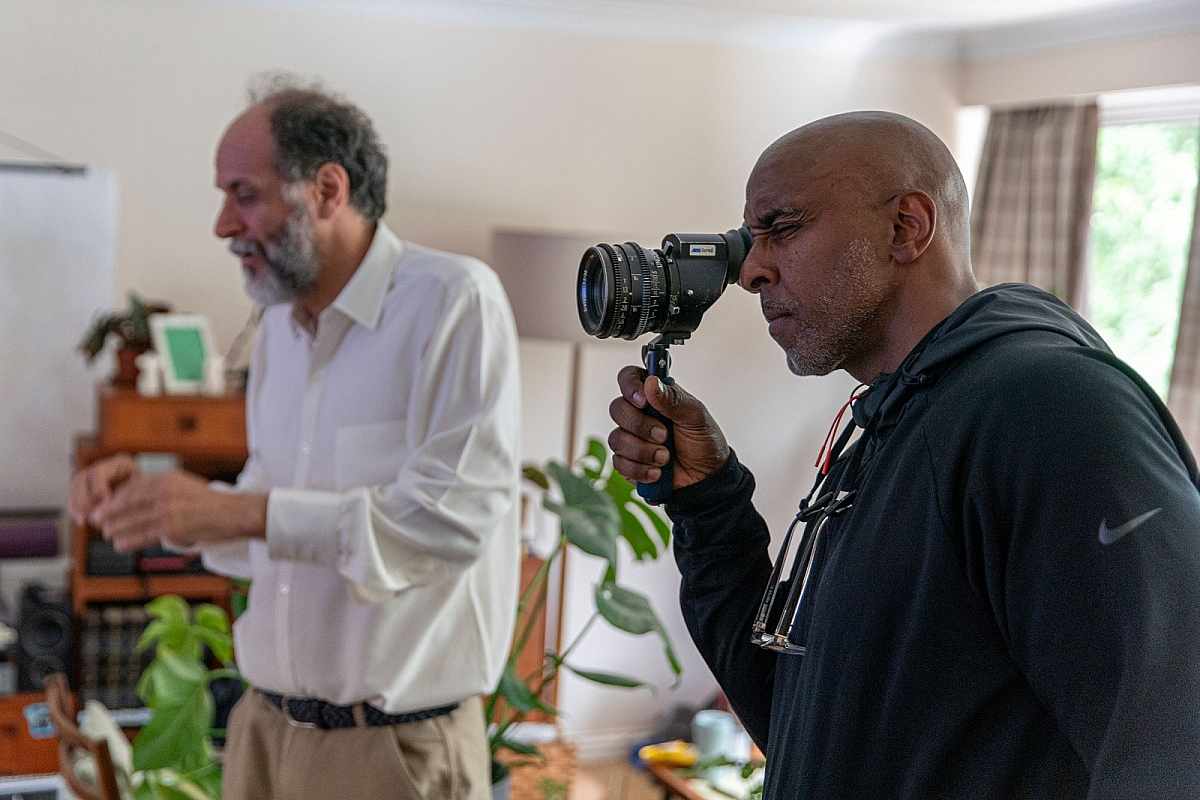
(L to R) Director Luca Guadagnino and director of photography Malik Hassan Sayeed on the set of AFTER THE HUNT, from Amazon MGM Studios. Photo by Yannis Drakoulidis. © 2025 Amazon Content Services LLC. All Rights Reserved.
To lock in to the one-lens approach, Sayeed undertook rigorous testing of different lens systems before he and Guadagnino settled on using Canon K35 optics.
"Canon K35 lenses were produced in 1976 by way of Canon's response to Zeiss Super Speeds," Sayeed explains. "So they're similar to the Super Speeds in that they're fast lenses, between T1.3 and T1.5, but they're a little bit warmer and they have some interesting optical properties too. They're sharp in the center, even when used wide open, with a pleasing patina, gentle focus fall-off and soft, round bokeh. You can see in the final film how I used the distortion at the edges of the frame to depict the dissonance between the characters, which Luca really liked."
Sayeed headed to London for six weeks of prep before the shoot got underway between June and September 2024. Although After the Hunt is set in and around the campus of Yale University in New Haven, Connecticut, it was shot almost entirely in the UK, except for background plates of the Ivy League institution and the town, which were composited during post production by the VFX team led by Fabio Cerrito at Frame By Frame out of Rome. Multiple interior and exteriors sets were built on the stages and backlot of Shepperton Studios, while Cambridge University proved key filming locations, namely Alma's classroom, Alma's office, the dean's office and Battell Chapel.
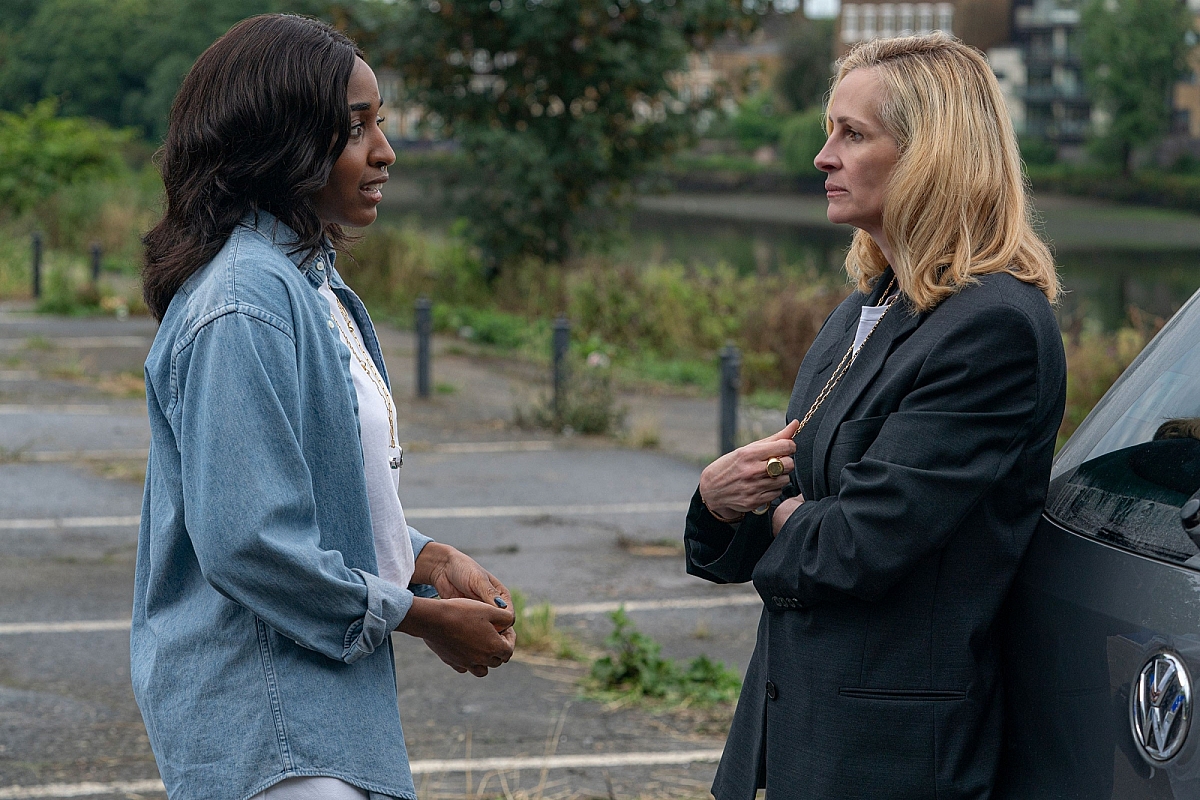
(L to R) Ayo Edebiri as Maggie and Julia Roberts as Alma in AFTER THE HUNT, from Amazon MGM Studios. Photo by Yannis Drakoulidis. © 2025 Amazon Content Services LLC. All Rights Reserved.
The DP framed the film in 1.85:1 aspect ratio for its traditional cinematic look and used ARRICAM ST and LT 35mm cameras for the shoot, filming with 1,000-foot magazines. As the camera was variously deployed on a crane, jib arm, dolly and rolling spreaders over rough surfaces, a Camera Revolution 4-axis Matrix gimbal was employed to ensure steady movement and give camera team freedom to move around spaces and react to performances without using tracks. The K35 lenses were supplied by Camtec in LA, with the rest of the camera package supported by ARRI Rental in the UK.
"With older lenses, like the K35s, you really do have to understand the characteristics of particular lens sets, as they don't all age exactly the same. So I had two sets that I know really well shipped over from the US, along with a set of Falcons that are made using the same glass.
"We needed three sets of optics, as we had two or three cameras running for certain scenes and needed the focal lengths to match. Although we carried 24mm, 35mm, 50mm and 85mm primes, 98% of the film was shot on using the 35mm lenses.
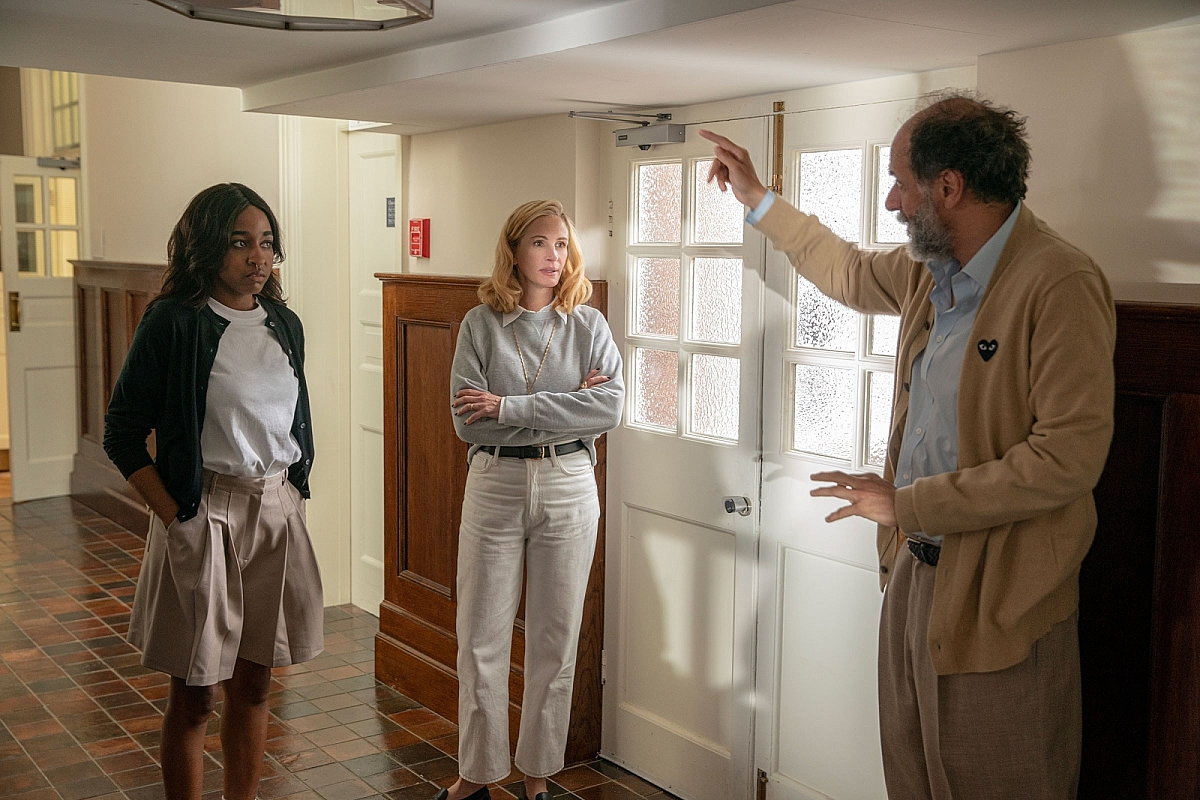
(L to R) Actors Ayo Edebiri and Julia Roberts with director Luca Guadagnino on the set of AFTER THE HUNT, from Amazon MGM Studios. Photo by Yannis Drakoulidis. © 2025 Amazon Content Services LLC. All Rights Reserved.
The DP selected all-Tungsten stocks for the film – KODAK VISION3 5213 200T for the mainstay of production and KODAK VISION3 5219 500T when the lighting conditions needed a faster capture medium – around a 60/40 split – using 85 color correction filters on the camera. Film processing was done at Kodak Film Lab, based on the lot at Pinewood Studios, with Harbor's Joe Gawler overseeing the final color grade.
"As they share the same base emulsion and processing, the 200T and 500T are a nice match for one another, with similar grain characteristics and both have great latitude. This allowed for a cohesive look across the different lighting conditions within the project. I used 85 filters on the camera, as I don't like to do the correction in the DI. I prefer the look to start from the place where things take place, rather than burning up time and energy in the grading suite."
Andrei Austin operated A-camera assisted by Wayne Goring on focus, with Callum Hammett heading the grip team and Mazi Mitchell supervising the lighting department as gaffer.

Julia Roberts stars as Alma in AFTER THE HUNT, from Amazon MGM Studios. Photo by Yannis Drakoulidis. © 2025 Amazon Content Services LLC. All Rights Reserved.
"Luca does not do many takes – mainly one or two maximum – which helped to keep our shooting ratio down along with the stock and processing costs. He's also very spontaneous. We didn't really know how we were going to cover a scene until we got there. This meant we had to be prepped for anything camera and lighting-wise, and to be able to react to what Luca wanted when we shot for real, which I think kept things fresh and true to the moment.
"The camera placement and blocking comes primarily from Luca. As he's also an editor with a great affinity for the photography, he knows how to cover a scene and what he wants to take into the editing room. He may not cover a whole scene, just a shot for a particular line of dialogue or a detail. I really admire that level of craft."
As per the brief to go old-school with the equipment, Sayeed says, "Apart from having to put some LED strip lights into Alma's kitchen, our lighting was all HMIs, fluorescents and incandescents. I like to root myself in the reality of where we are, so the lighting was motivated by the rooms and spaces where the action took place, using practical lamps around the interiors, and either daylight or sunlight coming through windows and skylights with the HMIs.
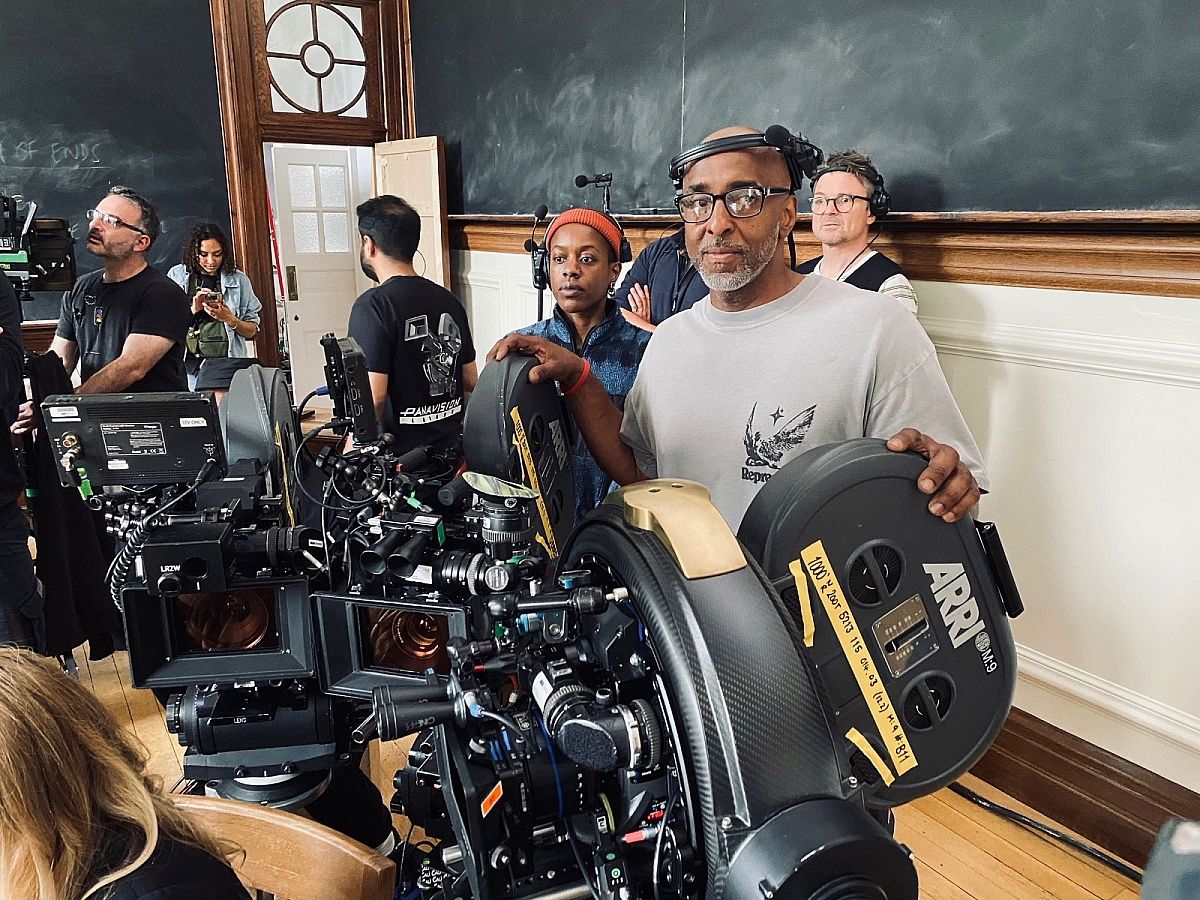
Director of photography Malik Hassan Sayeed on the set of AFTER THE HUNT, from Amazon MGM Studios. © 2025 Amazon Content Services LLC. All Rights Reserved.
"There were many moments when you realize there's a lot going on inside the character's minds, and I had to channel that intuitively by bringing a certain atmospheric presence to various scenes in Alma's apartment, along hallways and inside stairwells, which meant working in the toe and reaching into the shadows, which the VISION3 stocks do extremely well."
Looking back on his experience of returning to shooting features, he remarks, "Film is a comforting, calming space for me to function in. It's my normal. At the risk of shooting myself in the foot, I would be very, very, very happy just filming on film for the rest of my career.
"I think it was Japanese director Yasujirō Ozu's cinematographer who believed that the energy of the person who touches the camera is actually reflected on the film. It certainly brought its own special vibe and energy to the cast and crew on our set, and I think that has directly transduced into what you see on screen.
"Good vibes also came from the top. Being veterans, Luca and Julia both made this production a very enjoyable and harmonic experience for everyone involved. I was excited to work with Luca, and I am truly thankful he asked me to shoot this film for him."
After filming After the Hunt, Sayeed went on to shoot a second film for Guadagnino on 35mm film entitled Artificial, loosely based on the behind-the-scenes drama at CEO Sam Altman's OpenAI, the Silicon Valley behemoth behind ChatGPT, but that's another story.